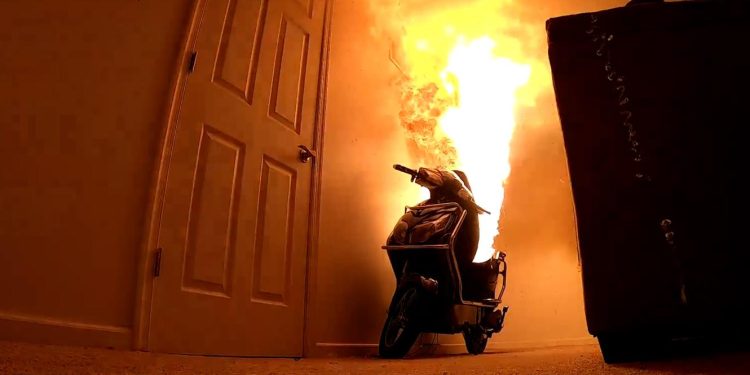Lithium-ion fires on the rise in New Zealand
Words NZ Autocar | Images Linked In, Fire Safety Research Institute
A 17 per cent rise in lithium-ion battery-related fires occurred last year, according to data from AMI. Mishandling during charging, storage, or disposal appeared to be the primary causes.

AMI Executive General Manager Claims, Wayne Tippet (above), says that more than one-half of all battery-related fire claims pertain to when devices are not in-use or being actively monitored. For example, when they are being charged, stored or disposed of.
“Consumer safety and battery handling education to ensure the safety of New Zealanders is vital.
“Lithium-ion batteries can be found in devices everywhere, including in our pockets. It’s important we all learn how to take care of these items to ensure they don’t ignite.”
Last year, over one-fifth of AMI’s lithium-ion battery-related fire claims occurred when the battery or device was charging.

“We’ve received claims for drones, e-bikes, cars and even campervans which have caught fire. Often it is while they are being left on charge for long periods of time, unsupervised.”
The recent claims data also reveal that battery-related fires are not limited to residential properties. Claims spanned various policy types, including motor (27 per cent), contents (25 per cent), home (23 per cent), commercial (23 per cent), followed by marine/boat (2 per cent).
AMI’s data follow recent reports from councils about a surge in lithium-ion battery-related fires. These have often started inside the containers of waste collection trucks.
“Please don’t throw batteries and battery-powered devices in your household waste,” he cautions.
“There are a number of collection facilities around the country for used batteries. Included are most Mitre 10 and Bunnings Warehouse stores, and e-waste services or recycling services for electronics.”

Fire and Emergency New Zealand’s Community Education Manager, Tom Ronaldson (above), says there is nothing inherently dangerous about lithium-ion batteries. But they can be a fire hazard if they are damaged, mishandled, or improperly disposed of.
Quick safety tips for lithium-ion battery powered devices:
- • Only use the charger that is specifically designed for the battery in your device.
- • When charging household items such as laptops, gaming consoles or mobile devices, do not place them on soft surfaces. Charge them while you are awake, unplugging them before going to bed.
- • Do not overcharge the battery by leaving it unattended for a prolonged period of time.
- • Keep an eye on the battery while it is in use and remove it immediately if it starts to feel hot.
- • Avoid exposing lithium-ion batteries to extreme temperatures, and do not puncture, crush, or otherwise damage the battery casing.
- • Do not dispose of batteries in household waste. You can contact your local council for a recycling location – most Mitre10 and Bunnings Warehouse stores, e-waste services or recycling services for electronics have battery recycling collections.
Quick safety tips for EV, e-bike and e-scooter charging:
- • Where possible these should be stored and charged outside of the house in a garage, shed or carport, away from living spaces. Keep them away from any exit doors, escape routes and combustible materials.
- • Only use electric vehicle charging adaptors supplied by the vehicle manufacturer or by an electric vehicle supply equipment (EVSE) manufacturer.
- • Don’t use any household adapter (such as a multi-box, double plug or a travel plug) between EVSE such as an In-Cord Control and Protection Device IC-CPD and a socket outlet.
- • Never use damaged or modified charging equipment, such as overseas equipment that has been fitted with a New Zealand plug.
- • Don’t use any faulty charging equipment. Get it checked by the manufacturer.





